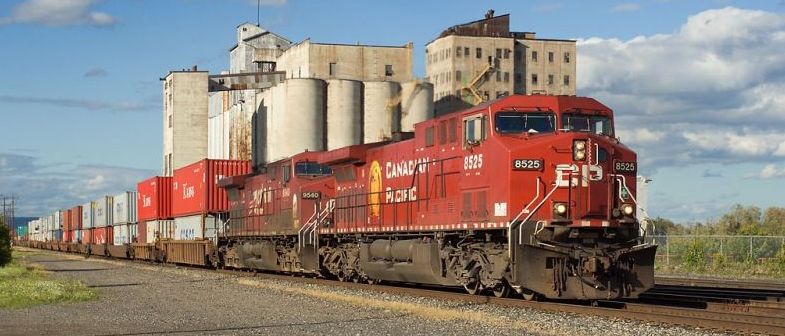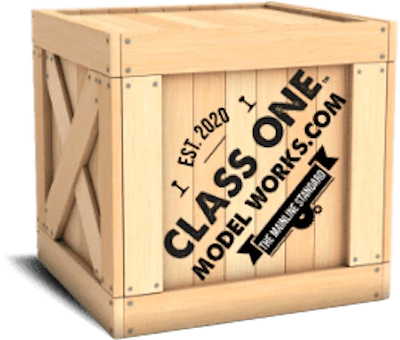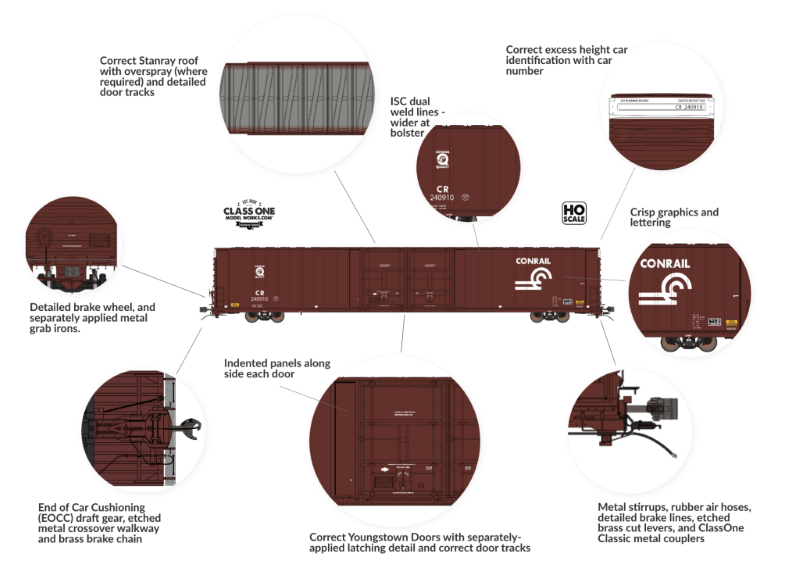
Train Addiction Help Line: 1.866.840.7777
Class One Model Works - Thrall 86' Highcube 4-Door Boxcar - Norfolk & Western (N&W) - #860460 - Dark Blue/Grey with White Lettering & Grey Doors (SKU 1007-FC00315)
Available On: February 1, 2024


"Between 1963 (when Thrall constructed the first two prototype cars) through 1978 (when Greenville supplied the last 86-foot, 6-inch hi-cube auto parts cars), the fleet of these freight cars swelled to 11,073. Of the commercial car builders, Thrall Car Manufacturing assembled 3,544 cars, placing them in the middle of the pack (production number-wise) between Greenville and Pullman-Standard. Thrall supplied cars from 1964 through 1973.
Thrall fabricated only part of the car in-house — the underframe assembly. Outsourced items included the roof and end sheets (to Stanray), doors (to Youngstown), and specialties such as brake gear, internal loader devices, etc. In a somewhat unusual move (for a large manufacturer), Thrall also chose to have the sides assembled by outside builders (due to the lack of floor space at their plant). Both International Steel Company (ISC) and Youngstown Steel Door (YSD) supplied the sides, and therein lies the key to the various Thrall designs, which are easily identified in any clear photo.
The major differences in the Thrall built cars were their side designs. In June 2006, Stephen Mayberry researched these cars and posted his findings to the Modern Freight Cars List, wherein he segregated cars by side design. Expanding on this excellent reference, a summary of the key differences for each car type follows. (Note: “Types” is a convenient shorthand to sort cars; neither Thrall nor the railroads differentiated between the various designs.) Across the production run, Thrall produced five 4-door side designs and two for the 8-door cars.
At the most basic level, cars received either welded or riveted sides. ISC furnished all the welded versions. Cars had either single or double welds at each interior side post. ISC had exited the business when Thrall returned to 86-foot car production in 1973, so Thrall contracted with Youngstown, which chose to furnish riveted sides.
Type One cars were easy to spot: they all had single welds and running boards. All cars received truck-mounted brakes and Keystone sliding sill cushion underframes (CUF).
Type Two cars were similar to the Type One design, with several notable exceptions. By the time this design debuted, the Interstate Commerce Commission had removed the requirement for running boards on top of hi-cube cars, so the Type Two lacked that detail. In addition, the internal hat section posts were turned around, and the side sheets were then welded to both flanges. Because the hand brake was now lowered, the retaining valve was relocated down below the side near the triple valve. All these cars also received Keystone CUF and truck-mounted brakes.
Thrall’s Type Three design introduced several changes, and the most obvious was incorporating indented “pockets” next to the doorway openings. These pockets were formed of much thicker sheet steel than the intermediate side sheets. This combination (thickness and forming it to resemble a shallow channel) was probably introduced to add stiffness to the sides. Another major change from the earlier types involved the underframes. While all the Type Three cars received Keystone’s CUF, the cars built in 1966 had six cross-bearer bottom tie beams fabricated from 10-inch wide flange beams, just like the earlier types. However, in August 1967, Thrall added four more cross-bearer bottom tie beams for a total of ten. These later beams had squared-off ends — most earlier designs had the ends cut off at an angle. Again, all cars received truck-mounted brakes.
For the Type Four cars, ISC revised the side layout once again. More posts were added, likely to add stiffness to the sides. The side posts near the bolster locations were wider, causing the accompanying welds to follow suit. The left and right sides were asymmetrical. The sheet widths next to the pockets differed between the left- and right-hand sides, shifting the side sheet welds sideways by about two inches. Seeing this in most pictures is almost impossible, but the detail is there. Why ISC did this remains unknown.The Type Four car’s significant underframe design change centered around cushioning. All cars built in 1967 received Keystone’s CUF. Beginning in January 1968 and through 1970, end-of-car cushioning (EOCC) was incorporated, causing a major change in the entire underframe layout, greatly altering the end view complexion. Regardless of cushioning, all Type Four cars received truck-mounted brake gear.
During Type Five construction in 1970 Thrall temporarily ceased making 86-foot hi-cube cars. As explained earlier, when the company restarted the line in 1973, new sides were introduced. Besides being riveted, the lower side sill incorporated jacking notches above the trucks. These were the only cars to receive standard foundation brake gear, probably due to railroad requests.Illinois Central became the only order for the Type Six 8-door cars, which had single-weld sides by ISC. Thrall built these cars in late 1964, and thus they came with running boards. However, it does appear the cars were delivered with low-mounted hand brakes in anticipation of that requirement.
Type Seven was the most complicated design. These were eight-door cars, and while most were delivered with Keystone’s CUF, one job (450) came with Freight Master EOCC. To complicate things further, cars built through January 1966 had the door openings spaced 20 feet, 6 inches apart. When production resumed that August, the side layout had changed, and the doorways were now spaced 20 feet, 7½-inches apart. All cars had dual welds at each interior side post, but concurrent with the door change, the side sheet layout also changed slightly, once again introducing asymmetrical side sheets.
The day of the massive 86-foot auto parts box cars has come and, likely, gone. For many years, auto parts shipping were essential contributors to numerous railroads' bottom line, resulting in many high-profile manifest trains. These shipments generated significant revenue for the railroads and were indispensable to the auto industry from the early 1960s to circa 2000. Many of these cars (of all types) are still in service moving auto parts from plant to plant."

Looking for more Class One Model Works Products? Click Here!


$65.99 US


